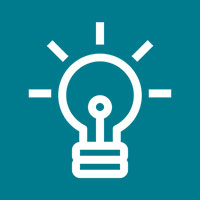 Getting Started
Getting Started
Topic 3 explores the importance of program goals and how they ensure high-quality, culturally and linguistically responsive comprehensive services. This critical function of the Head Start planning cycle underscores how important it is for programs to plan strategically and to retain an unwavering focus on program goals, including school readiness goals and parent, family, and community engagement goals. These components work together to support progress toward child and family outcomes.

Families are critical in helping their children be ready for school. Head Start programs can be partners in this endeavor.
As outlined in Topic 1: Nuts and Bolts of Strategic Planning, program goals related to child and family outcomes are broad statements that describe what a program intends to accomplish through its work with (and in support of) children and families. The ongoing partnership between program staff and families is crucial in supporting children's school readiness. As your program implements child development services and constructs school readiness goals that align with the Head Start Early Learning Outcomes Framework (ELOF), you will also need to integrate parent and family engagement strategies into all systems and program services. This will enable you to promote family growth and development as exemplified in the Parent, Family, and Community Engagement (PFCE) Framework. Families play a critical role in helping their children be ready for school, and Head Start programs are valuable partners in this endeavor.
What Is the ELOF?
The ELOF:
- Is a guide for programs to plan and implement a comprehensive, yet focused, early learning program
- Reflects research on what young children should know and be able to do in the following five domains:
- Approaches to Learning
- Social and Emotional Development
- Language and Literacy
- Cognition
- Perceptual, Motor, and Physical Development
- Applies to all Head Start program settings serving children ages birth to 5, including center-based, family child care, and home-based programs
- Applies to all children, including children who are dual language learners (DLLs) as well as children with disabilities
- Provides rich descriptions of children’s developmental progressions, which can help program staff implement intentional teaching practices to support children at various ages
- Informs many aspects of program practices, such as:
- Establishing school readiness goals
- Selecting and implementing a curriculum
- Selecting assessment instruments
- Planning professional development
 Learning Objectives
Learning Objectives
Programs consider how the planning cycle emphasizes a solutions-oriented mindset with honest dialogue and an examination of challenges and barriers. Programs will become familiar with a range of tools and techniques to advance strategic planning, such as Appreciative Inquiry and The 5 Whys.Read more:
Resource Type: Article
National Centers: Program Management and Fiscal Operations
Audience: Directors and Managers
Last Updated: August 8, 2023